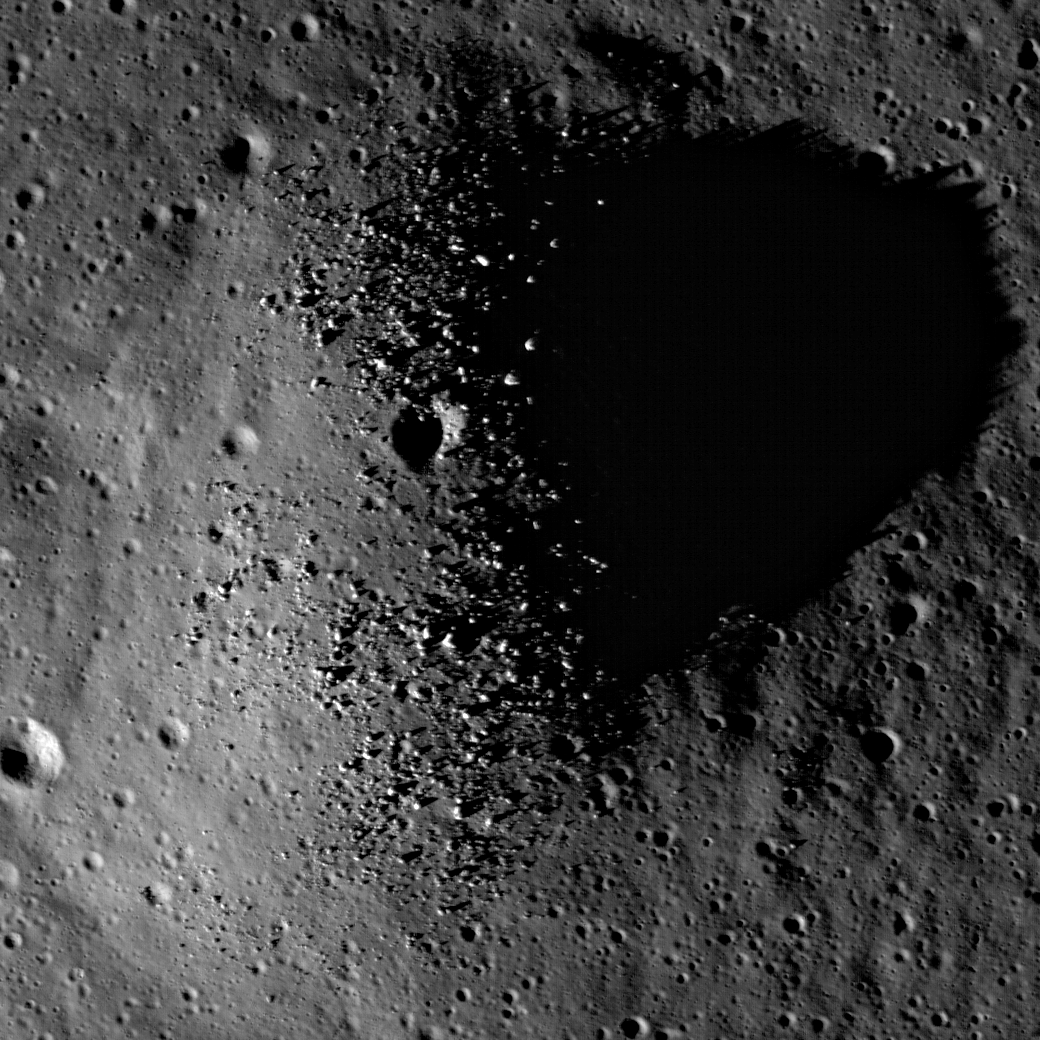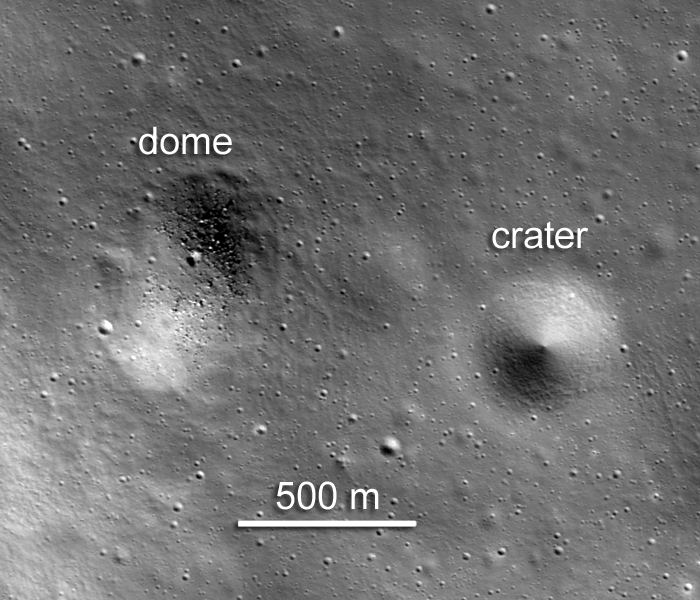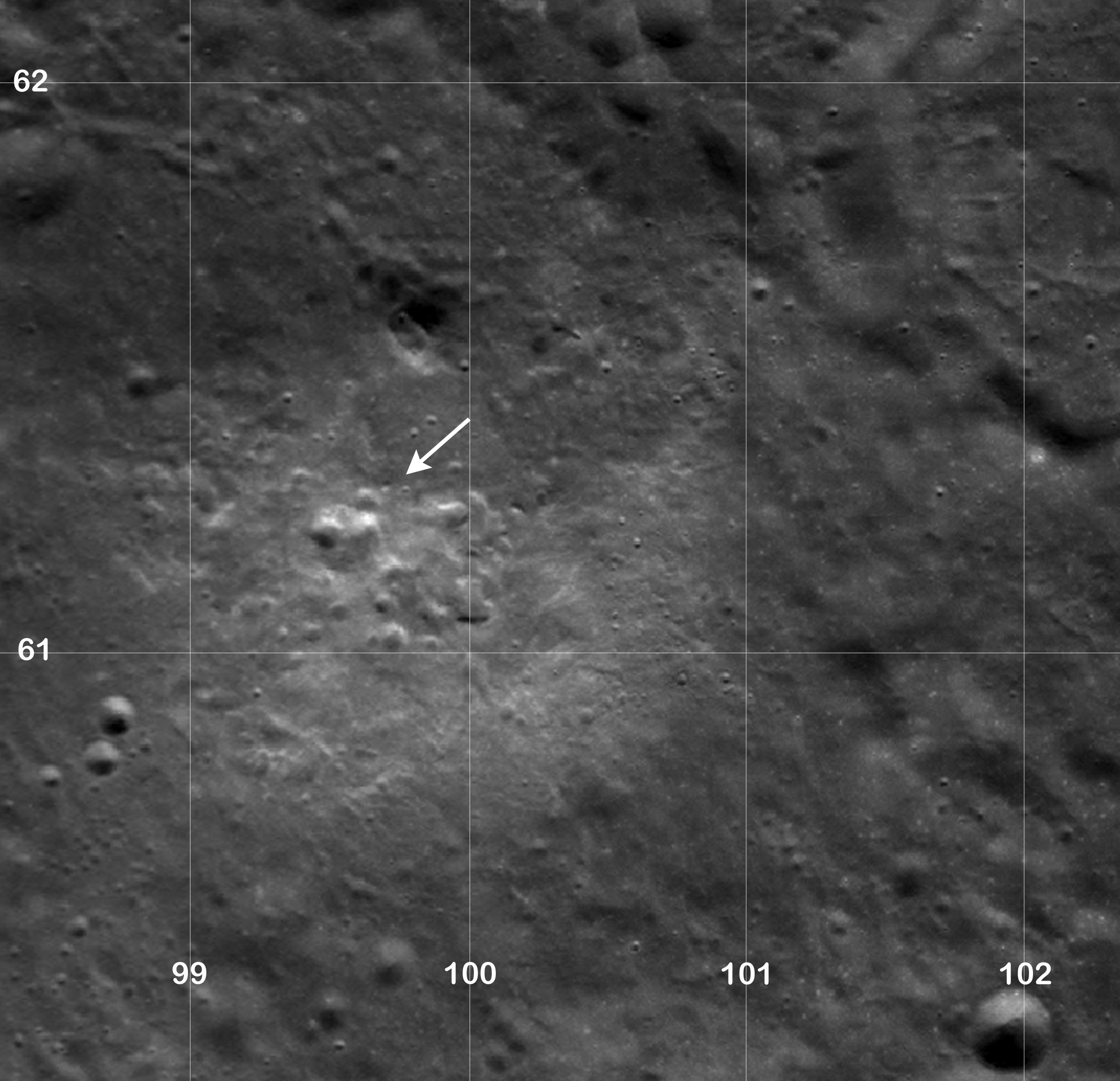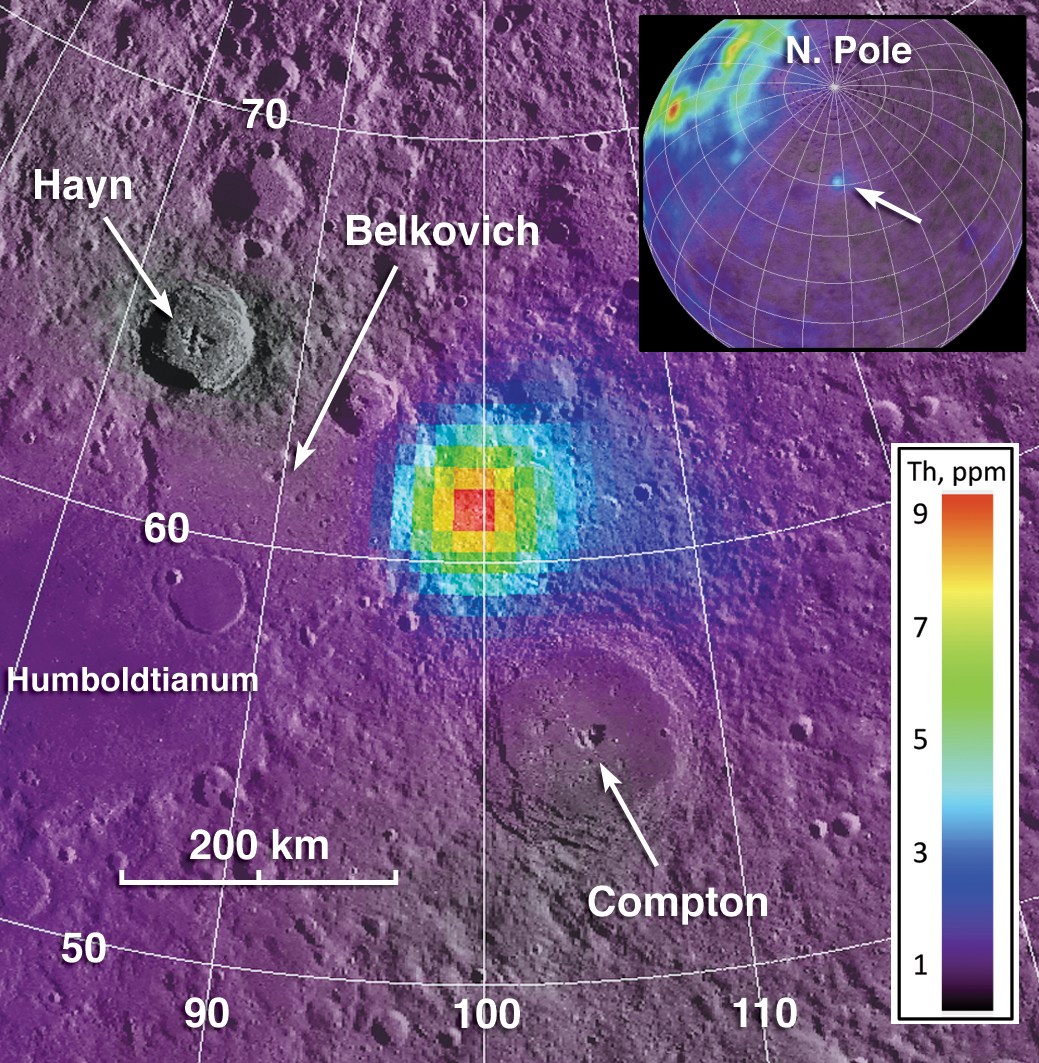

Since the domes in the Compton-Belkovich area are rounded and smooth (excepting the boulders scattered across the summit) they are not easy to spot. At sunrise and sunset (above) even smooth topography casts long shadows. In this case the Sun is 13° degrees above the horizon, showing that the slopes of the dome are steeper than 13°, an important clue to unraveling its origin. Steeper slopes often mean more viscous magma, which in turn points toward more silica rich compositions.

Are you having trouble seeing the feature as a dome, that is, with positive relief? Consider the above subsampled NAC image that shows a wider view and includes a small crater just east of the dome. The sun is from the left. Sometimes your brain can be fooled - you see what is up as what is down. If you know the Sun direction you can "force" the ups to become downs, and vice versa. And what about the little crater at the top of the dome? Is it a volcanic vent or an impact crater? If you said “impact crater” – you are right! The top of the dome is actually about 100 m south of the small crater. The crater just happens to be near the top of the dome.

The Compton-Belkovich volcanic complex is easily spotted as the relatively bright area in the center-left side of the WAC mosaic (above), covering an area of about 35 km across. For scale, the distance between the longitude lines is about 15 km.

The Compton-Belkovich site was of special interest even before the LRO mission began. Back in 1998 the Lunar Prospector spacecraft, with its gamma-ray spectrometer, measured the global distribution of the element thorium, which has a strong peak in the gamma-ray spectrum because it is naturally radioactive. Although much of the Moon’s thorium, at least as expressed on the surface, lies mostly on the nearside, a terrain between the craters Compton and Belkovich lit up like a bull’s eye (above). For this reason, the site was selected as one of NASA’s Project Constellation sites because it is of high interest for future human or robotic exploration.
This thorium “hot spot” was described by David Lawrence and the Lunar Prospector gamma-ray spectrometer team (see figure), later Jeff Gillis and coworkers noted in looking at Clementine images that a high albedo feature was located near the center of the thorium bull’s eye (see WAC context image above). However, since then, the origin of the hot spot and the nature of the deposits was not known until LRO imaged the site with the LROC Narrow Angle Cameras. Those images revealed numerous volcanic features, some large, and some small, like the little dome seen in today’s featured image. Between the Lunar Prospector and Diviner geochemistry and the LROC images, we are able to determine that these domes are examples of silicic (rich in silica relative to basalt) volcanism. An amazing discovery - the only silicic volcanism on the farside! You can read more about the Compton-Belkovich volcanic complex in the online issue of Nature Geoscience, “Non-mare silicic volcanism on the lunar farside at Compton–Belkovich,” DOI 10.1038/NGEO1212.
Be sure to return and read future posts about other features in this intriguing and unusual volcanic terrain on the Moon. What a fabulous place this would be for astronaut geologists to explore, do field geology, and collect samples for analysis! In the meantime explore the full resolution NAC and see what volcanic features you can find!
Published by Mark Robinson on 25 July 2011